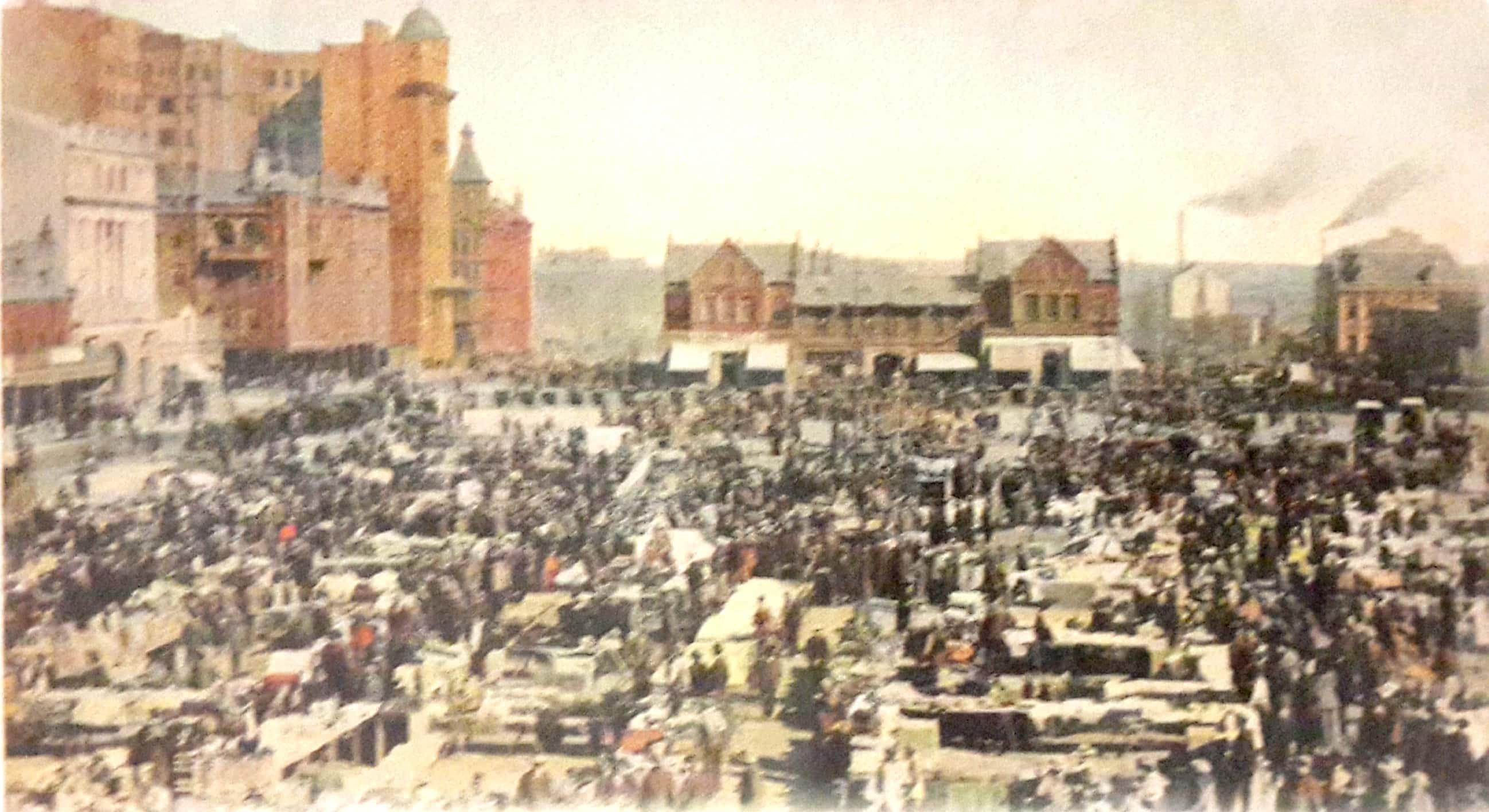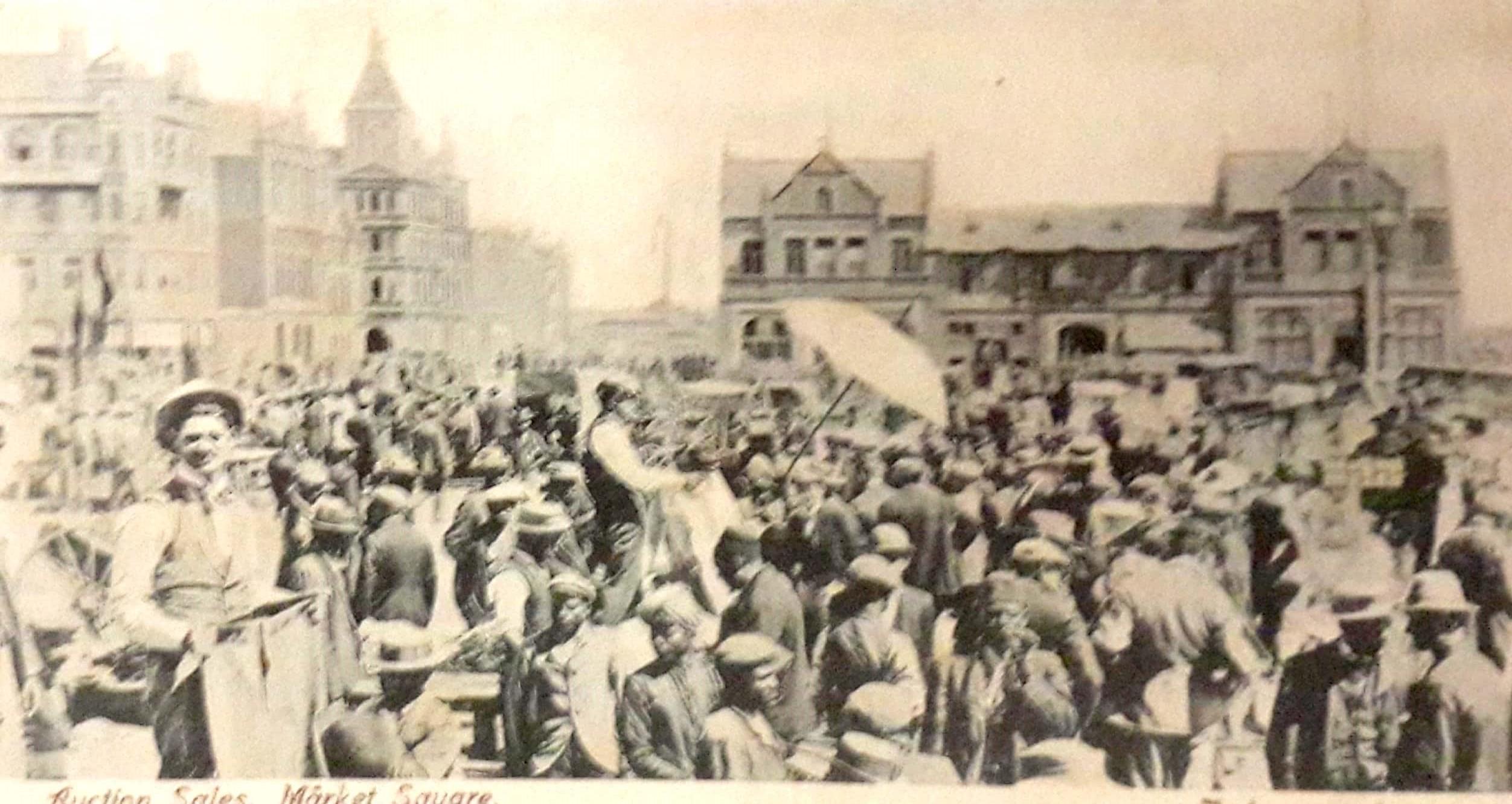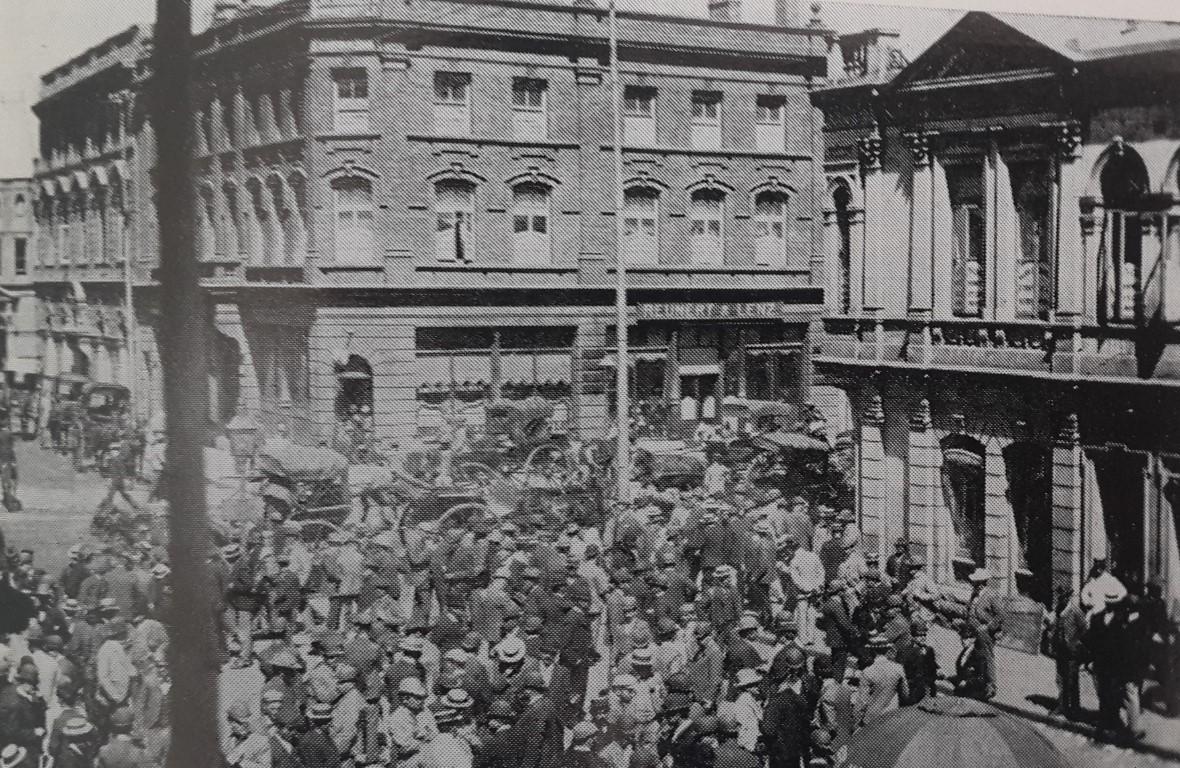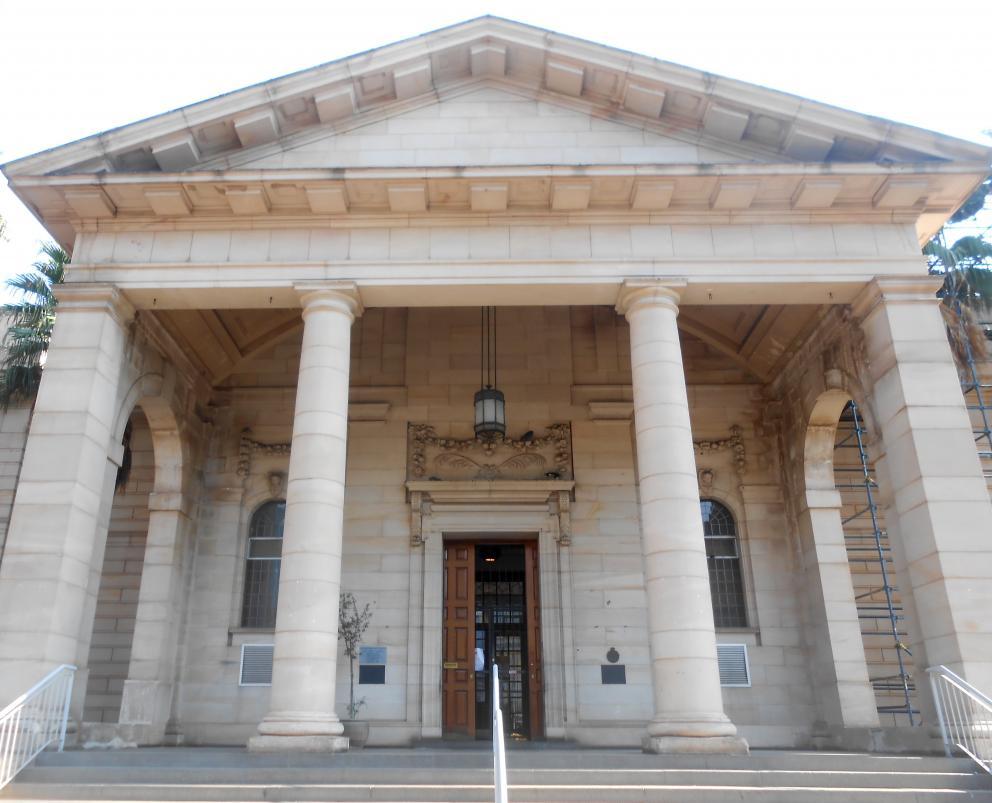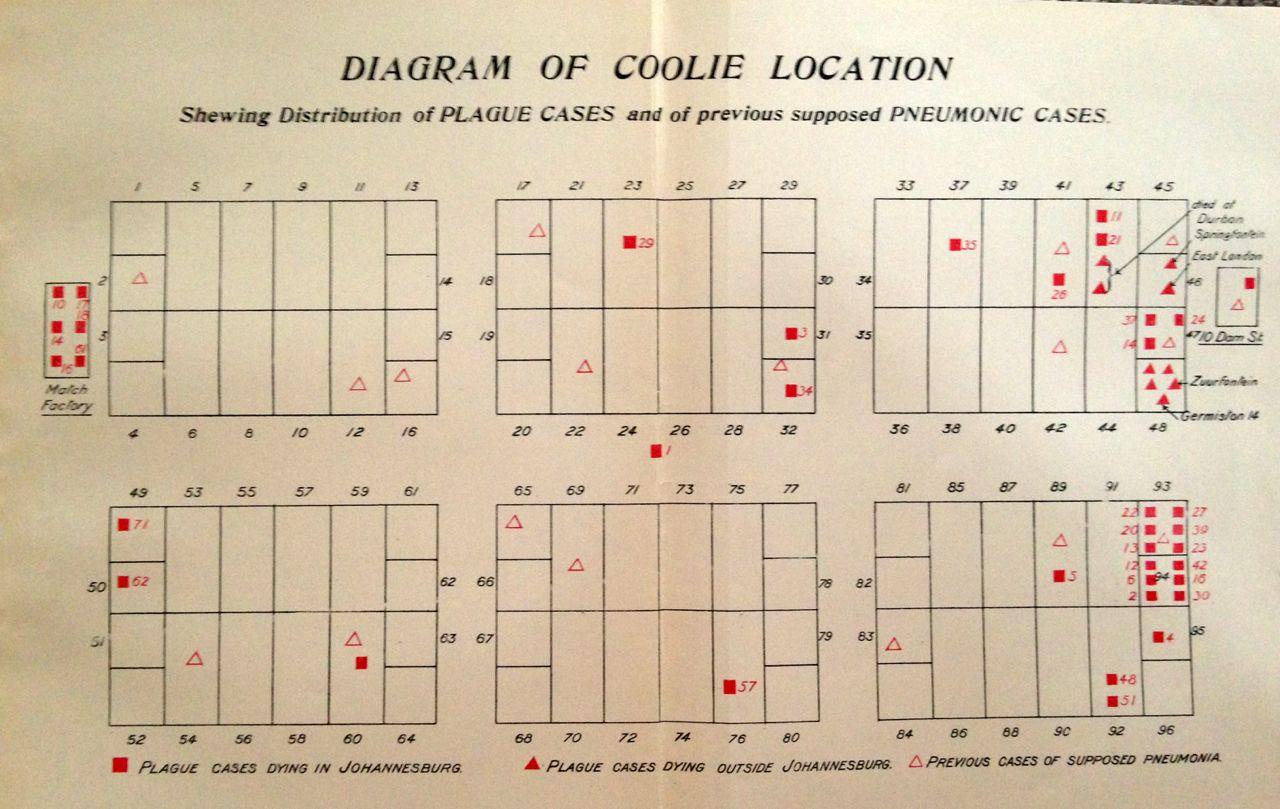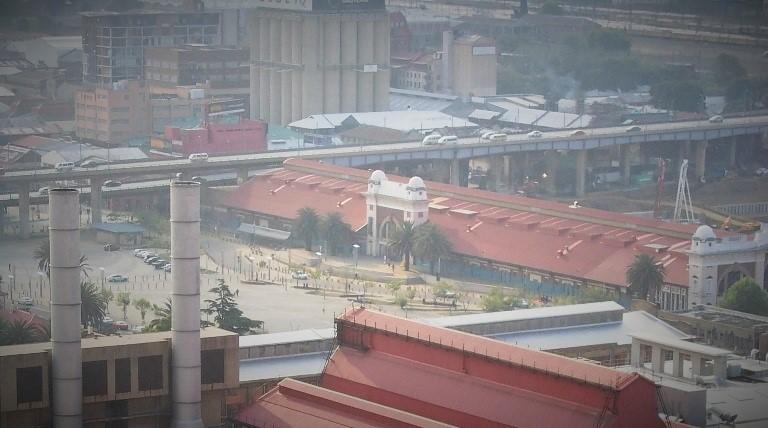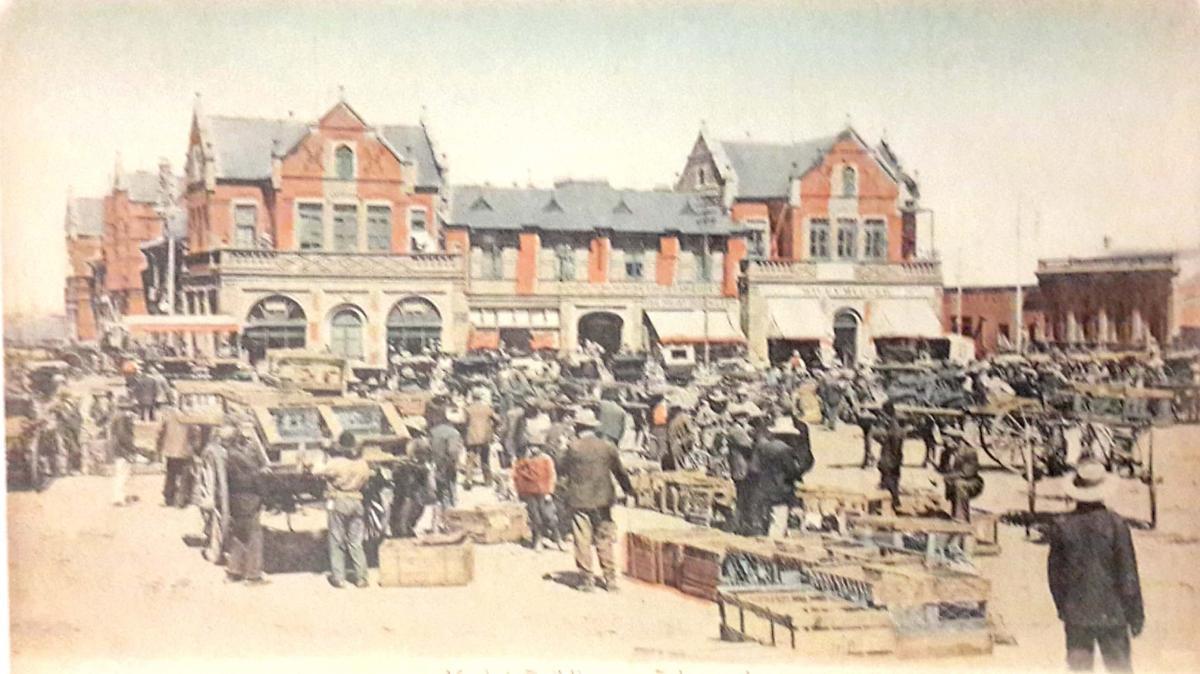
Disclaimer: Any views expressed by individuals and organisations are their own and do not in any way represent the views of The Heritage Portal. If you find any mistakes or historical inaccuracies, please contact the editor.
The following history of Johannesburg's early markets formed part of a much larger piece on the Market Theatre which appeared in the 1976 edition of Restorica, the old journal of the Simon van der Stel Foundation (today the Heritage Association of South Africa). The name of the author does not appear which is a huge shame for such a well researched article. Thank you to the University of Pretoria (copyright holders) for giving us permission to publish.
In early Johannesburg, markets operated in a haphazard fashion in Ferreira's Camp and on the Square in Marshall's Camp where produce was sold out of hand from the back of Boer wagons. Paul Kruger could see that if this trading was organised on a proper basis it could produce an additional form of State income; he therefore promulgated regulations compelling all produce to be sold through a central market. The market was to be run by a Market Master who would receive a commission of 10% on the turnover. One does not need to be a financial wizard to appreciate that the job of Market Master in Johannesburg would be a particularly lucrative one, and a scramble for the job began. The then deputy Sheriff, lvlr Zulsdorff, was elected; however, by some sleight of hand he was replaced by Stefanus Papenfus before he had even thought of making a start. Stefanus Papenfus was one of Johannesburg's earlier shrewd operators, the brother of a local politician and a friend of Carl von Brandis.
At 7.00 a.m. on 7th February, 1887 Papenfus opened his first market, having previously put up a tin shack a few yards to the west of the site now occupied by the City Hall, on the newly laid out Market Square, the survey of which had been completed by Jos de Villiers in November, 1886. At first only a few wagons came each day; however, with the great purchasing power of Johannesburg, the market grew. After eight months a turnover of £50 000 had been achieved of which Papenfus reaped £5 000 against a modest £250 which accrued to the Gezondsheids Committee: which received 0.5% per annum of the turnover out of which it was expected to run the thriving young town.
A Full Market Square (A Johannesburg Album)
Within a year Paul Kruger complained that the Market Master in Johannesburg was making more money than the President himself. John R Shorten in his detailed study of the period, "The Johannesburg Saga" records that in order that the public might enjoy the comforts of a public market, the use of which was to be optional, Market Master Papenfus persuaded the Government to give him the right "to erect a building, to let stalls, shops, offices and rooms, to conduct sales in the said building, and to let the main hall for public entertainments". Valued at approximately £1 000 a wood and iron market house was erected in May 1888, containing the promised offices and other facilities, and by another remarkable negotiation this enterprising man leased the offices to the Government for 10 years at an annual rental of £300. "i.e. the entire building was paid for in three years from the rental derived from only a small portion".
Towards the end of 1888 Papenfus sold out his interest. However, it was obvious that the Johannesburg Market was too lucrative an operation to be left in the hands of an individual with its average monthly turnover of £39 000. In 1889 the Johannesburg Market Buildings Company Limited was launched under the chairmanship of Dr Hans Sauer, Rhodes's local representative. This Company also acquired the concession held by the Johannesburg Weigh bridge Syndicate which had been established to erect and work a weighbridge. In a description of the Market buildings in February 1890 The Star reported: "The market hall is thronged with all races and all colours and the stall holders do a roaring business. The proceedings are enlivened by a kind of music produced from a harp, violin and cornet".
An Auction in Progress on Market Square (A Johannesburg Album)
It was quite clear that Papenfus's market was becoming too small for the growing business. In September1891, a new brick building was constructed at a cost of £49 000 containing a market hall, 26 shops and 44 offices on the first floor. This building on the Market Square became the focal point of local business and social activity in Johannesburg for a decade. Here one could see black convicts being flogged in the open or breaking stone to harden the surface, the mud of the open square being sprayed with carbolic, the open air stock exchange functioning in Simmonds Street over the road from the Market Square, and side by side with them the land and cattle auctioneers and other salesmen peddling their wares.
Between the Chains (The Johannesburg Saga)
In 1904 dead rats were found in the market building. All the fixtures were removed and piled up in the square where at midnight on 18th May, thousands watched a huge bonfire which was eventually extinguished by the fire brigade. Fear of a plague scare was at such a pitch that the Rand Plague Committee would not allow the buildings to be reopened until the end of that year. The owners of the market instituted proceedings against the Municipality for £19 000. They submitted that they had suffered these damages due to the closure of the Market. On 1st April 1906 the Town Council and the Government, as equal partners, bought the market concern for £189 750 which put an end to this drawnout legal squabble. Immediately prior to Union the Transvaal Government transferred its entire share of the Market and Market Square to the Town Council, one of the conditions being that the income derived from its share was to be devoted to the establishment of an art gallery for Johannesburg. This was later built in Joubert Park.
Johannesburg Art Gallery (The Heritage Portal)
The plague scare provided the Town Council with an opportunity to buy the so-called "Insanitary Area" where, Maurice Norton notes, "about 6 000 people are living in great squalor with the fear of plague". The then Town Council passed an ordinance whereby the area was expropriated. The fire brigade had the paradoxical assignment of burning the whole area to the ground. Here Newtown was laid out with 646 stands and ample provision for the new market undertaking and an abattoir.
Plague Cases in 'Coolie Location'
The main buildings, built by Henderson & Gordon at a cost of £115 000, were ready for trading operations by early March 1913. At that time the market hall, 118 ft wide and 660 ft long constituted the largest area covered by a single roof in the country. Apart from auction facilities there were 41 shops, a restaurant, bank, post office and railway offices all within the confines of the hall itself, and an annexe provided a further 11 shops devoted to the sale of meat, dressed poultry, fish and butter. At the eastern entrance was a large hall referred to as the "Corn Exchange". Here commercial men engaged in the grain trade. A large open space to the south of the main building was known as the "Outspan" and here wagons, rolling in from the countryside, could park and make use of the weighbridge facilities. The Outspan was later called "Mary Fitzgerald Square" after a lady better known as "Pickhandle Mary" who led strikers in 1911 against the police, armed with pickhandles stolen from a convenience store. She also led a group of militant women who immobilised the Johannesburg Tramway Department by the effective method of sitting on the rails. By the middle 20's, wagons were disappearing and gradually the Outspan came into use as a parking area for commercial vehicles and for the convenience of housewives shopping in the retail market.
Museum Africa and Mary Fitzgerald Square from above (The Heritage Portal)
The friendly and cosmopolitan crowd, so characteristic of old Johannesburg, soon settled into its new trading home in Newtown. Barney Simon notes "that despite the beauty and vitality of their new market, the Municipality was afraid that the new site might seem too far for the town's housewives, so they provided free tram rides from the old to the new market site and a brass band that entertained them on their arrival. On Sundays, the main hall was used for symphony concerts".
It will be seen that there is a good case for preservation of the Market especially in Johannesburg, where so few old buildings have been preserved. Nevertheless, even the most preservation conscious must admit that it would be an exorbitantly expensive luxury for any Municipality to restore such a building unless a viable use could be found for it. Such a use was not forthcoming and the Roads Department found the site convenient through which to make a new motorway. The Municipality reluctantly resolved to demolish the building. However, in the Forward Planning Branch, Maurice Norton had sufficient foresight and persistence to work on in the hope of staying the demolition order. His idea was to turn portion of the Market, namely the old "Corn Exchange" and "Annexe" into a theatre but like all good ideas, it was useless unless it could be "sold" to those in authority. Patiently objections were worked on and overcome. However, the Council was still not convinced. To many of them this remained "emotional nonsense" until Maurice Norton read somewhere that the Johannesburg Market contained the largest 3-pin arch in the country. This comparatively small point swung the politicians and authority alike, for who amongst us would wish to go down in history as having sanctioned the destruction of so significant a construction?
Once the city fathers had given their blessing to the scheme it was "all systems go". The premises were put out to tender" to persons interested in taking over the shell and converting it into a theatre". The tender was won by "The Company" and their "Market Theatre Foundation", a non-profit making company, was formed to raise funds from public donation and subscription to restore and convert the existing building into a theatre for the use of all South African theatre producers.
Comments will load below. If for any reason none appear click here for some troubleshooting tips. If you would like to post a comment and need instructions click here.

